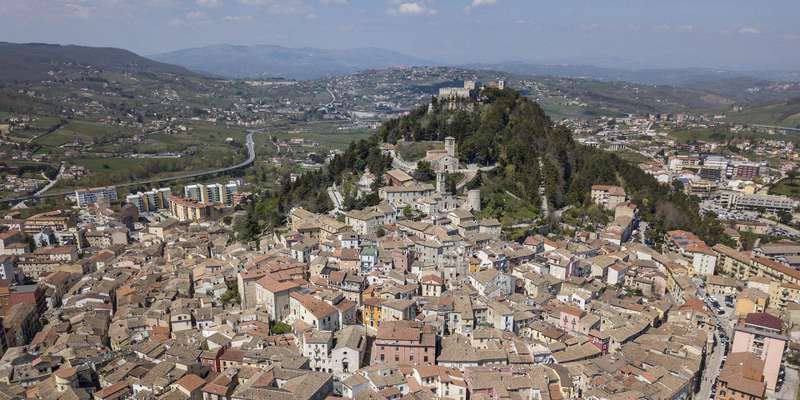- Home
- Useful Tips
- Combining a visit to Campobasso...
Most travelers overlook Italy's Molise region, missing the authentic charm of Campobasso's medieval quarters and Isernia's ancient Roman roots. The challenge lies in connecting these underrated destinations efficiently while uncovering their hidden gems. With 78% of visitors to the area spending just one day here (Regional Tourism Board, 2023), many leave without experiencing the perfect pairing of Campobasso's castle vistas and Isernia's trattorias serving rare truffle-infused dishes. The frustration mounts when relying on sparse public transport schedules or generic itineraries that don't account for seasonal festivals or local market days. This creates unnecessary stress in a region where the magic lies in precise timing and local knowledge.


Navigating between Campobasso and Isernia without wasting half your day
The 45km journey between these towns can become a time-consuming ordeal if you rely solely on infrequent trains. While the rail connection exists (with 2-3 daily departures), savvy travelers use the more flexible bus services operated by Molise Trasporti, which run hourly from Campobasso's Piazza Vittorio Veneto. For those preferring autonomy, early car rentals from Campobasso's historic center agencies often offer better rates than airport pickups. A local secret? Wednesday departures align perfectly with Isernia's weekly market, letting you combine transit with cultural immersion. Watch for shared taxi services advertised in Campobasso's Piazza Pepe – these unmarked vans follow the same route at nearly half the cost of private transfers.
Curating your perfect day across both towns' highlights
Begin in Campobasso with sunrise views from Monforte Castle before the crowds arrive, then descend through the stairways of San Bartolomeo district for a breakfast of rare caciocavallo cheese at Antico Caffè San Leonardo. Time your arrival in Isernia for lunch at Trattoria Da Nennella, where third-generation chefs prepare authentic pampanella (slow-roasted pork with chili). The key is reversing conventional routes – most tour groups start in Isernia, meaning you'll have the 13th-century Fontana Fraterna to yourself if you arrive mid-afternoon. Don't miss the hidden Roman crypt beneath Isernia's cathedral, accessible by requesting the key from the adjacent souvenir shop. Evening return trips allow you to catch Campobasso's passeggiata along Corso Vittorio Emanuele when the medieval stonework glows under artisan lanterns.
Where to stay for seamless access to both destinations
Locals know the strategic value of rural agriturismi along the SS17 highway, offering quicker access to both towns than central hotels. Tenuta Collina Verde provides authentic stone cottages with panoramic Molise views just 15 minutes from either city, plus homemade breakfasts featuring rare Sammichele cherries. For urban bases, Campobasso's Hotel San Giorgio positions you steps from the morning bus terminal, while Isernia's Palazzo D'Avalos delivers luxury in a restored 16th-century palace. Budget-conscious travelers should target midweek stays – unlike major Italian cities, Molise's accommodation prices drop significantly Tuesday through Thursday. Many family-run properties offer free guided walks when you book direct, unlocking access to sites like Campobasso's mysterious underground oil mills.
Tasting Molise's culinary heritage across two distinct traditions
Campobasso and Isernia showcase divergent food histories united by quality ingredients. Begin with Campobasso's signature dish, cavatelli con ventricina – the pasta's rough texture catching the spicy pork spread's oils perfectly at Ristorante Il Vecchio Muro. Cross into Isernia for their ancient sheepherding traditions manifested in rare pecorino di grotta cheeses at Caseificio Di Nucci. Time your visit for autumn to join the white truffle hunts in Isernia's surrounding woods (free with local foraging clubs). A little-known fact: many vineyards between the towns offer 'bottle your own' experiences for just €10, including at Cantina Cerere where the owner explains Molise's unique clone of Montepulciano grapes. Evening food tours in Campobasso's Jewish quarter reveal how Spanish influences created dishes like adafina stew, unavailable elsewhere in Italy.
